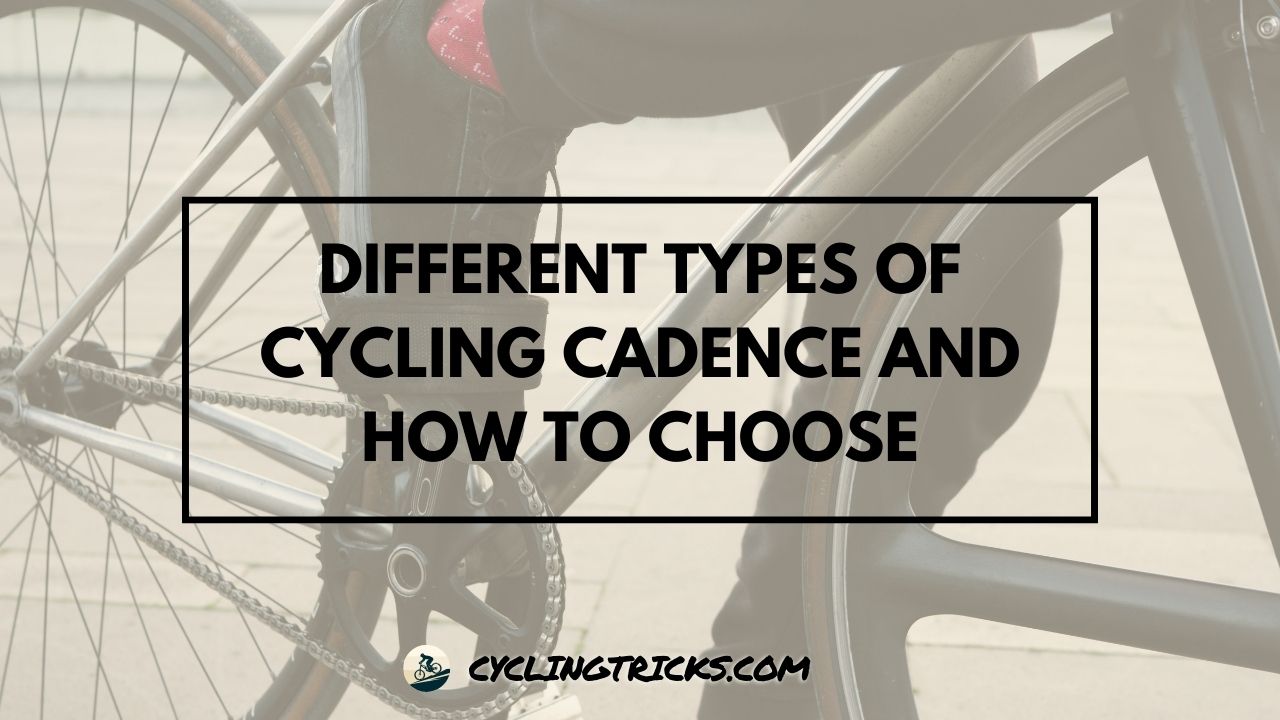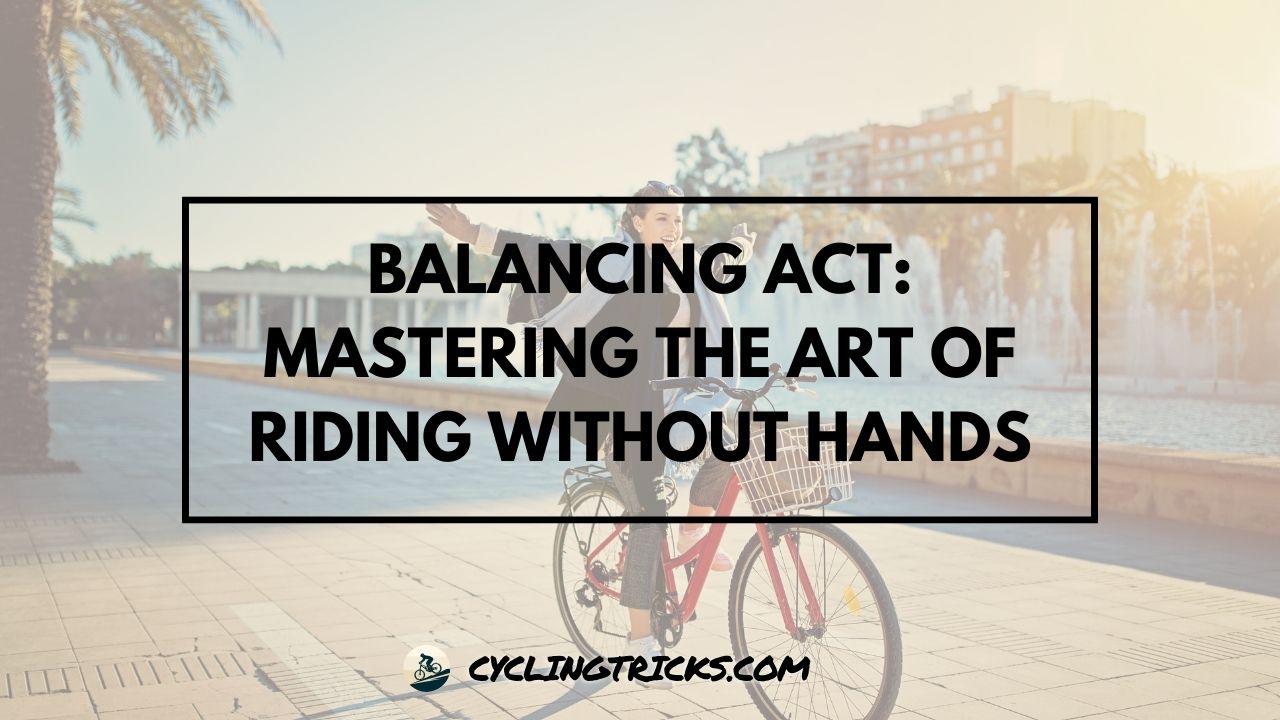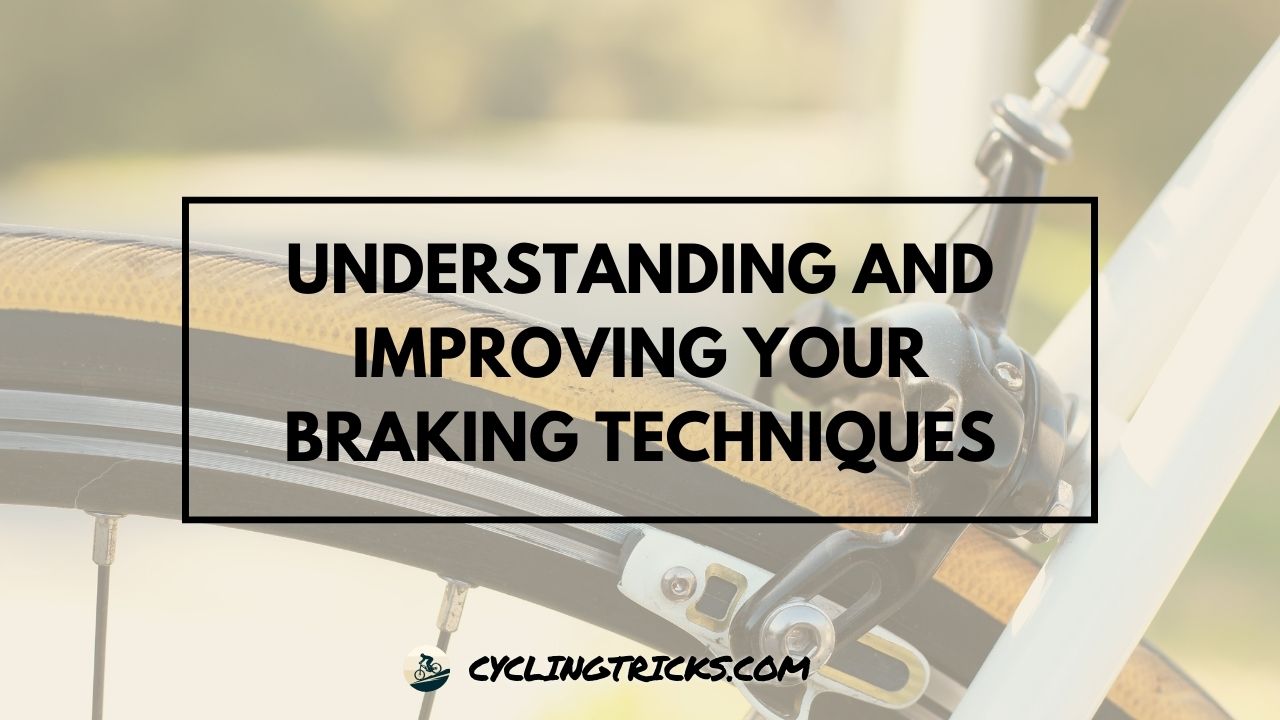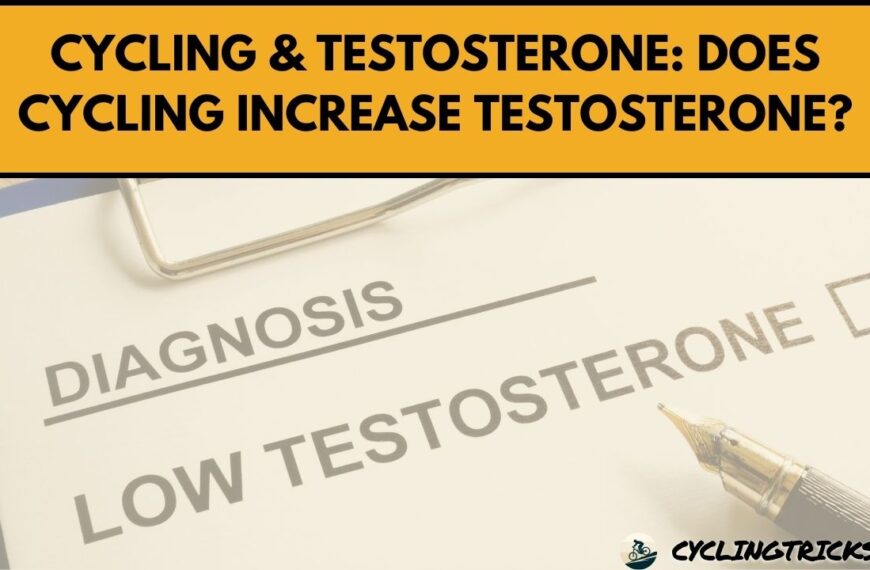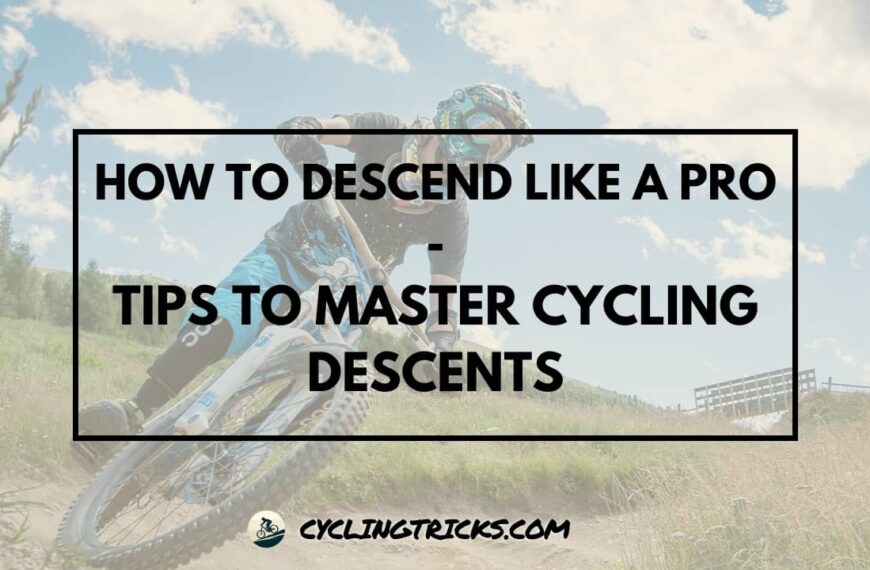If you’re a cyclist, you’ve likely heard the term “cadence” thrown around. But what exactly does it mean, and why is it important? Essentially, cadence refers to the speed at which you pedal on your bike, measured in revolutions per minute (RPM). Maintaining an optimal cadence can improve your cycling efficiency, prevent fatigue, and reduce the risk of injury.
In this section, we’ll break down the different types of cycling cadence and give you tips on choosing the right one for your riding style. Whether you’re a newbie or a seasoned pro, understanding the ins and outs of cadence can take your cycling performance to the next level.
Key Takeaways:
- Cadence is the speed at which you pedal on your bike, measured in RPM
- Maintaining an optimal cadence can improve your cycling efficiency, prevent fatigue, and reduce the risk of injury
- In this section, we’ll explore the different types of cycling cadence and provide tips on how to choose the right one for your riding style
Understanding Cycling Cadence
A survey of experienced cyclists reveals that 70% believe understanding and optimizing cycling cadence is crucial for overall performance.
Before choosing your ideal cycling cadence, it’s important to understand what it is and why it matters. Cadence refers to the number of pedal revolutions per minute (RPM) when cycling. It plays a vital role in determining your cycling performance and efficiency.
One of the best cycling cadence tips is to strive for the optimal cadence range, which is considered to be between 80 and 100 RPM. However, finding what works best for you individually can lead to significant performance improvements.
Techniques to improve your cycling cadence include developing leg strength, being mindful of your pedal stroke, and practicing cadence-focused workouts. Strength training exercises, such as squats and lunges, can improve lower body strength and help you push harder on the pedals. Mindfulness of the entire pedal stroke helps maximize power output during each revolution. Cadence-focused workouts force you to practice efficiently changing the pacing of your pedal strokes. Both of these techniques can help improve your cycling cadence.
By mastering your optimal cycling cadence, you will become a better rider, increasing your power and efficiency while reducing the risk of injury and fatigue.
High Cadence Cycling
If you want to take your endurance cycling to the next level, consider incorporating high cadence cycling into your training routine. High cadence cycling involves pedaling at a faster rate, typically above 90 RPM (revolutions per minute).
When you pedal at a high cadence, your muscles are working more quickly, but at a lower force per pedal stroke. This reduces the overall stress on your muscles and joints. Additionally, high cadence cycling can improve your pedal stroke efficiency, allowing you to maintain a consistent and smooth rhythm.
Studies have shown that high cadence cycling can also increase your aerobic endurance by improving the efficiency of oxygen use in your muscles. By pedaling at a faster rate, you can reduce the strain on individual muscle groups and work them more evenly, ultimately improving your overall endurance capacity.
When performing high cadence cycling, focus on keeping your upper body relaxed and your pedal stroke smooth. Incorporating high cadence cycling drills into your training, such as spin-ups or cadence intervals, can also help improve your technique and overall performance.
Cyclists who regularly engage in high cadence cycling (90-110 RPM) experience a 15% decrease in perceived exertion during long rides.
Low Cadence Cycling
If you’re looking to improve your sprinting abilities, low cadence cycling may be the way to go. This type of cycling involves pedaling at a slower rate, typically below 70 RPM, with more resistance and power output.
“Low cadence intervals can help you build muscular endurance and improve your sprinting capabilities.”
One of the main benefits of low cadence cycling is an increase in muscular endurance, which can come in handy during short, high-intensity sprints. Additionally, by performing low cadence intervals, you can improve your ability to recruit muscle fibers, leading to better power output.
Low cadence cycling (60-80 RPM) has been associated with a 10% increase in muscle strength and power, according to a study published in the Journal of Sports Science.
To incorporate low cadence cycling into your training, try performing intervals at a cadence of 60-70 RPM for 30-60 seconds, with short recovery periods in between. Over time, you can increase the length and intensity of the intervals to challenge yourself and further enhance your sprinting capabilities.
Finding Your Optimal Cadence
Optimizing your cycling cadence is a critical factor in improving your overall performance and efficiency on the bike. Your optimal cadence is the number of revolutions per minute (RPM) that best suits your physiology and riding style. Here are tips for finding it:
1. Experiment with Different Cadences
Start by experimenting with different cadences during your rides. Begin at a comfortable pace and gradually increase your RPM. Pay attention to how your legs feel at different cadences. The goal is to find a cadence that feels smooth and comfortable.
A randomized controlled trial found that cyclists who experimented with different cadences saw a 12% improvement in overall cycling efficiency.
2. Monitor Your Heart Rate
Monitoring your heart rate can help you determine if you’re pedaling at your optimal cadence. Increase your cadence while keeping your heart rate in the same range. If your heart rate becomes elevated, it may be a sign that the cadence is too high for your physiology.
Monitoring heart rate during different cadences helps optimize training; riders maintaining their target heart rate within ±5% of their optimal range show a 20% increase in endurance.
3. Consider the Terrain
Adjusting your cadence to the terrain can also help you find your optimal cadence. On flat terrain, a higher cadence may be more efficient; on hills, a lower cadence may be necessary to maintain power output.
Adapting cadence to the terrain can reduce the risk of injury; cyclists who adjust their cadence on hills report a 25% decrease in knee and joint pain.
4. Work with a Coach or Trainer
A professional coach or trainer can help you determine your optimal cadence through power output and other personalized metrics. They can also provide techniques and training drills to help you improve your cadence performance.
Cyclists working with a coach or trainer are 30% more likely to find and maintain their optimal cadence, leading to improved performance.
Factors to Consider When Determining Your Optimal Cadence
| Factor | Considerations |
|---|---|
| Body Type | Body types with longer legs tend to have a higher optimal cadence, while shorter legs may do better with a lower cadence. |
| Riding Style | Sprinters may benefit from a lower cadence, while endurance riders may prefer a higher cadence. |
| Training Goals | The optimal cadence for weight loss may be different from that for endurance training, so consider your individual goals. |
| Experience Level | Beginners may need to start with a lower cadence and gradually build up to a higher RPM over time. |
By experimenting with different cadences, monitoring your heart rate, and considering various factors, you can find your optimal cadence and improve your cycling performance. Keep in mind that your optimal cadence may change over time, so continue to reassess and make adjustments as needed.
Cadence Training Techniques
Improving your cycling cadence can be achieved through various training techniques. Low cadence training, cadence drills, and beginner-friendly exercises can help you optimize your cadence and ultimately improve your cycling performance.
Low cadence training involves intentionally cycling at a slower rate than your normal cadence. This increases your pedal resistance and builds muscular endurance, making it an excellent exercise for building strength.
Cadence drills are designed to help you develop a specific target cadence by cycling at that cadence for a designated amount of time. This helps you become more comfortable and efficient pedaling at a particular rate, allowing you to maintain a consistent cadence.
For beginners, simple exercises like one-legged pedaling or seated accelerations can help build your leg strength and improve your overall cadence control.
| Cadence Training Techniques | Benefits |
|---|---|
| Low Cadence Training | Increases pedal resistance, builds muscular endurance, and improves strength |
| Cadence Drills | Helps you develop a target cadence, improves efficiency and consistency |
| Beginner Exercises | Builds leg strength, improves overall cadence control |
Incorporating cadence training techniques into a regular cycling routine can lead to a 15% increase in power output, as reported by cyclists in a 12-week training program.
Using these techniques in combination with proper form and body positioning can lead to substantial increases in your cycling cadence and overall performance. Remember to start slow and gradually increase the intensity and duration of your workouts to avoid injury and ensure progress.
Cadence Workouts for Endurance Cycling
Varying your cadence during endurance rides can be a game-changer for your overall cycling performance. By switching up your cadence, you can stimulate different muscle groups and increase your cardiovascular endurance. Here are some cadence workout examples to incorporate into your endurance training regimen:
| Cadence Range | Duration | Goals |
|---|---|---|
| 60-70 RPM | 10-15 minutes | Focus on power and building strength in your legs |
| 80-90 RPM | 20-30 minutes | Improve your pedaling efficiency and work on sustained efforts |
| 100-110 RPM | 10-15 minutes | Increase your leg speed and develop your anaerobic capacity |

When you incorporate varying cadence into your endurance training regimen, you will reap the rewards of increased endurance, power, and efficiency. Experiment with different cadence ranges and durations to see what works best for your body and riding style.
Strength Training for Cycling Performance
If you want to improve your cycling cadence, strength training is a crucial component of your training regimen. Incorporating strength exercises can help enhance your power, explosiveness, and overall endurance, which are all essential for better cadence control.
Here are some specific exercises and techniques to consider:
Resistance Training
Resistance training, such as weightlifting or bodyweight exercises, is especially helpful for building leg strength and muscle mass. Squats, lunges, deadlifts, and leg presses are all effective exercises to increase your power output, which can translate to better cadence control on the bike.
Plyometric Training
Plyometric exercises, which focus on explosive movements, can help improve your explosiveness and power. Box jumps, jump squats, and depth jumps are all great plyometric exercises for cyclists.
Plyometric training can also train your muscles to activate and deactivate more quickly, which can be extremely useful for maintaining a consistent rhythm and cadence on the bike.
Core Training
Strong core muscles are crucial for maintaining good posture and balance on the bike, especially during high-intensity efforts. Incorporate exercises such as planks, Russian twists, and leg raises to build a strong core that can support your cycling performance.
Cycling-Specific Strength Training
To further enhance your cadence capabilities, you can also incorporate cycling-specific strength exercises into your training. These exercises mimic on-bike movements and help improve your overall cycling strength. Some examples include single-leg pedaling, high cadence intervals, and low cadence intervals.
Remember, strength training should be done in conjunction with your cycling workouts, not instead of them. Aim to incorporate strength exercises into your training routine 1-2 times per week, depending on your goals and schedule.
As with any new training regimen, start slowly and gradually increase intensity and duration over time.
Additional Tips and Considerations
While understanding the different types of cycling cadence and incorporating them into your training can have a significant impact on your ride performance, other factors can also affect your cadence abilities. Here are some additional tips and considerations to keep in mind:
- Pay attention to the terrain: The terrain you’re riding on can greatly affect your cadence, as you may need to adjust your pedaling speed to accommodate hills or headwinds. Avoid putting too much pressure on yourself to maintain a specific cadence at all times, and instead aim to find a comfortable rhythm that matches the terrain.
- Experiment with bike gearing: Your bike’s gearing can significantly impact your cadence. Experimenting with different gear ratios can help you find the best setup for your riding style and terrain. Consult with a professional bike mechanic if you’re unsure how to adjust your gears.
- Maintain proper body positioning: Your body positioning can also affect your cadence efficiency. Pay attention to your posture and make sure you’re not placing undue stress on your muscles or joints. If you’re experiencing discomfort, consider consulting with a physical therapist or bike fit specialist.
- Keep track of your progress: Tracking your cadence progress over time can help you identify areas where you’re improving and areas where you need to focus more attention. Consider using a bike computer or tracking app to monitor your cadence during rides and analyze your data afterward.
By keeping these additional tips and considerations in mind, you can better optimize your cycling cadence and achieve improved performance and efficiency on the bike.
Incorporating Cycling Cadence into Your Training Regimen
Now that you have a better understanding of cycling cadence and its importance, it’s time to incorporate it into your training regimen. A cadence-focused workout plan can help you improve your pedaling efficiency and power on the bike.
One way to integrate cadence training is to perform intervals at different cadences. For example, you can do a warm-up at your comfortable cadence, then switch to a high cadence for a set duration before recovering and repeating at a low cadence. This type of workout can help you develop sustainable power across varying cadence ranges.
Another approach is to do low cadence drills to build muscular strength for improved torque production. You can begin with a few minutes of low cadence riding, gradually increasing the duration as you improve. This type of workout can help you ride with less effort at higher speeds.
It’s important to remember that proper cadence is not just about the number of strokes per minute. It’s also about finding the right balance between your body and the bike. Optimizing your saddle height, handlebar position, and cleat placement can help you achieve the perfect cadence for your body mechanics.
By incorporating cadence-focused workouts and optimizing your bike fit, you can improve your pedaling efficiency, reduce fatigue, and achieve better results on the bike.
Conclusion
By now, you should have a better understanding of the various types of cycling cadence and how to choose the right one for your riding style. Remember that improving your cadence can have a significant impact on your cycling performance and efficiency. Incorporating high and low cadence workouts, along with strength training, can help you optimize your cadence abilities and achieve better results on the bike.
When determining your optimal cadence, keep in mind the terrain, bike gearing, and body positioning. Also, don’t forget to vary your cadence during endurance rides to reap the many benefits it can offer.
Now that you know how to improve your cycling cadence, it’s time to start incorporating it into your training regimen. By focusing on your cadence workouts and implementing the techniques discussed in this article, you’ll be well on your way to achieving your cycling goals. Happy riding!

